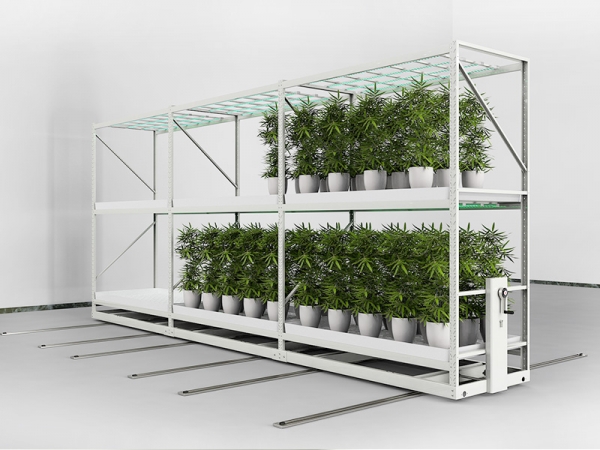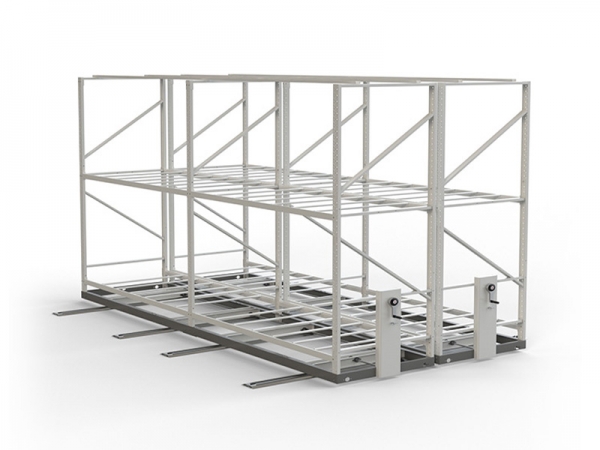Light environment is one of the important physical environmental factors that are indispensable for plant growth and development. Controlling plant morphogenesis through light quality regulation is an important technology in the field of facility cultivation.
LED plant growth light is a kind of lamp that uses LED as the light source, and needs sunlight according to the law of plant growth.
LED grow light helps to shorten the growth cycle of plants, because the light source of this light is mainly composed of red and blue light sources, using the most sensitive light band for plants, red light wavelengths use 620-630nm and 640-660nm, blue light wavelengths 450-460nm and 460-470nm were used. It allows plants to promote the differentiation of multiple lateral branches and buds during the growth process, accelerate the growth of roots, stems and leaves, accelerate the synthesis of plant carbohydrates and vitamin synthesis, and shorten the growth cycle.
The large number of LEDs in vertical grow rack systems should indicate that LED grow lights are especially suitable for artificial light-controlled plant facility cultivation environments.
The color temperature and lumens of artificial light sources are seen by the eyes of living things, while the demand of plants for light is photosynthesis, which is determined by the radiation value regardless of color temperature and lumens.

(1) 280~315nm––> This wavelength is already ultraviolet light, and it has the function of direct suppressive growth for the growth of various animals, plants and even fungi, and has minimal impact on the morphological and physiological processes.
(2) 315~400nm––> This kind of light wave is also far-ultraviolet light. Although there is no ultraviolet light to harm plants, it has no direct effect on plant growth, and the absorption of chlorophyll is small, which affects the photoperiod effect and prevents stem elongation.
(3) 400~520nm (blue) –> Such wavelengths can directly develop the roots and stems of plants, and have the largest absorption ratio of chlorophyll and carotenoids, and have the greatest impact on photosynthesis.
(4) 520~610nm (green) -> green plants are repelling and pushing, and the absorption rate of green pigment is not high.
(5) 610~720nm (red) –> The absorption rate of chlorophyll in plants is not high, but this wavelength has a significant impact on photosynthesis and plant growth rate.
(6) 720~1000nm––> This kind of wavelength is generally infrared wavelength, which has low absorption rate for plants, which can directly stimulate cell extension, which will affect flowering and seed germination.
(7) >1000nm––> the wavelength of laser light is close to and has been converted into heat.
From the above plant and spectral data, each wavelength of light has different effects on plant photosynthesis. Among the light that plants need for photosynthesis, 400 ~ 520nm (blue) light, and 610 ~ 720nm (red) light for photosynthesis. Photosynthesis contributes the most, and 520 ~ 610nm (green) light has a very low efficiency rate for plant growth.

According to the above principle, the spectrum of plants only for 400 ~ 520nm (blue) and 610 ~ 720nm (red) has the effect of directly helping growth, so the plant lights under the academic concept are made of red and blue combination, all blue, full There are three forms of red to provide light with two wavelengths of red and blue, which are used to cover the wavelength range required by plants for photosynthesis.
In terms of visual effects, the red and blue LED plant growth lights are pink. This mixed light color is extremely uncomfortable for biological lighting. Sex is the main thing.
In general, white LED lamp beads, the most common one is to use a blue core to excite the yellow phosphor to emit light, and the compound produces a visual white light effect. On the energy distribution on the integrating sphere test report, there are two peaks in the blue region at 445 nm and the yellow-green region at 550 nm.
The 610 ~ 720nm red light required by plants is less covered and cannot provide light and the light efficacy required for the planting plants. This explains why the growth rate and harvesting effect of plants are not as good as those of ordinary outdoor planting under the illumination of white light LEDs.
Using the above data, the chromatographic ratio of red and blue lights of general plant lights is generally between 5:1 and 10:1, and the ratio of 7 to 9:1 is usually selected. The light basis, the number of non-lighting lamp beads is the light mixing basis.
When planting plants with led grow lights, the height from the leaves is generally about 30-50 cm. In the middle, it is still necessary to give different light intensities according to the type of plants. Adjusting the height is generally regarded as the easiest way to adjust the brightness.
According to the manufacturer of plant grow racks, the racks of large plant factories are equipped with LED lights for plants, which are different from the general LED spectrum. In order to cooperate with photosynthesis, the spectrum of plant lights is blue and red, and it can also be adjusted according to individual needs. Into cold and warm white light, with the mobile phone APP remote control, the operation is very convenient. The multi-layer frame plant factory is equipped with a water circulation system. It has been tested to grow more than 100 kinds of plants, which is suitable for those who need mass production.